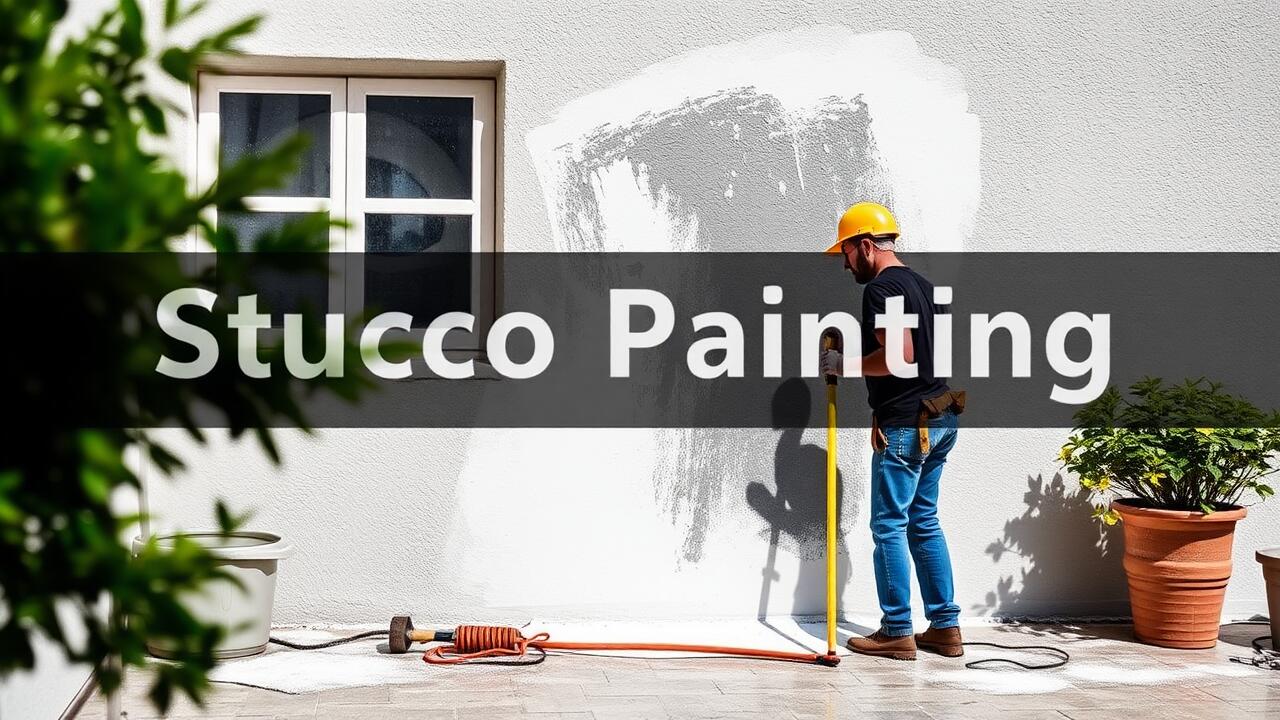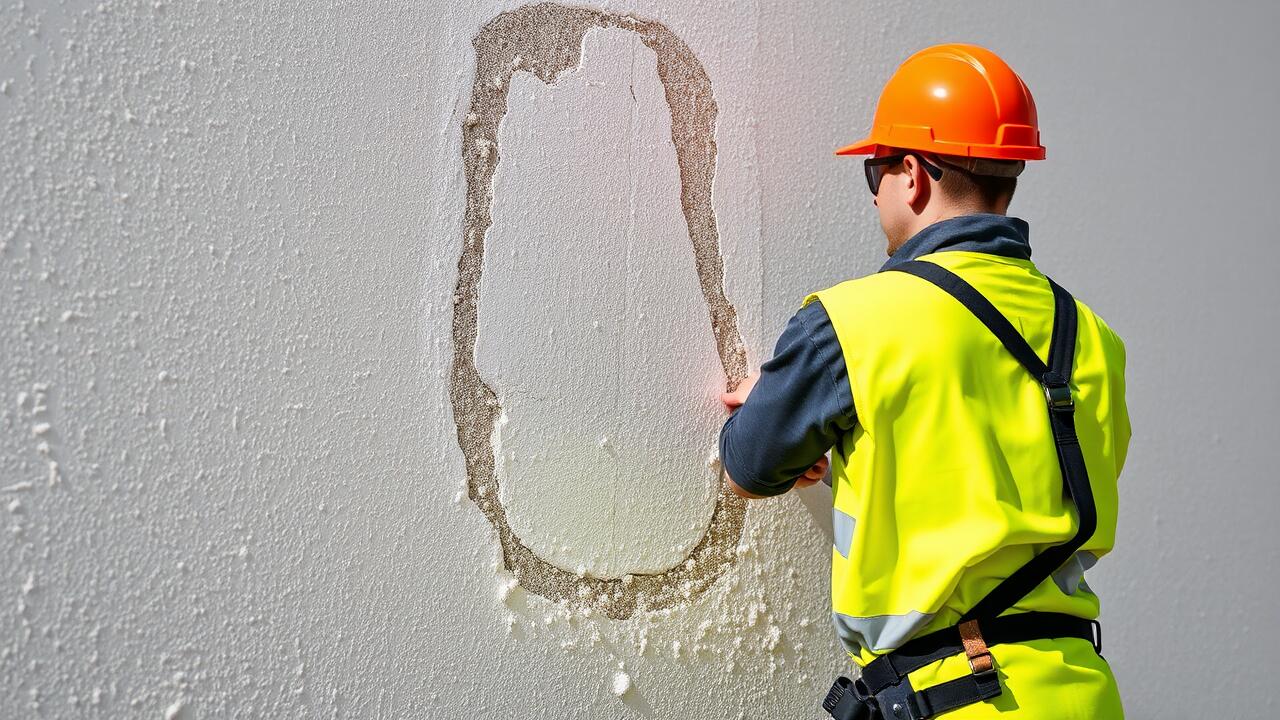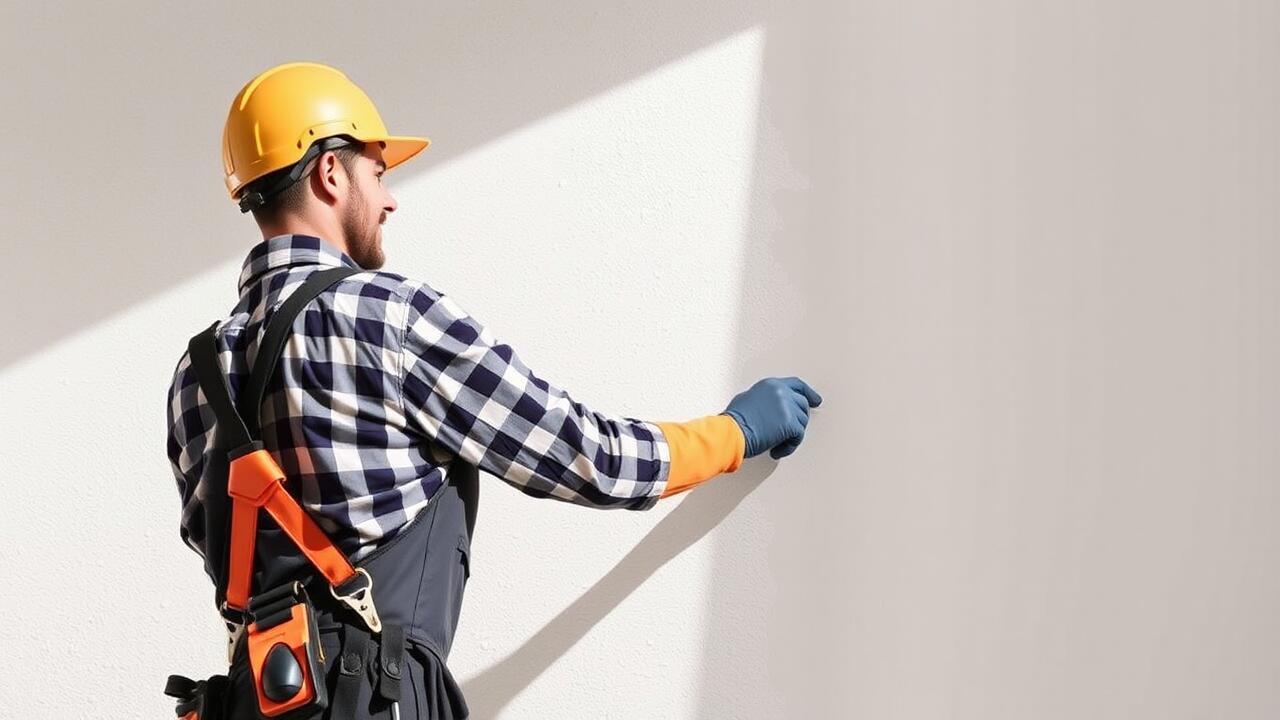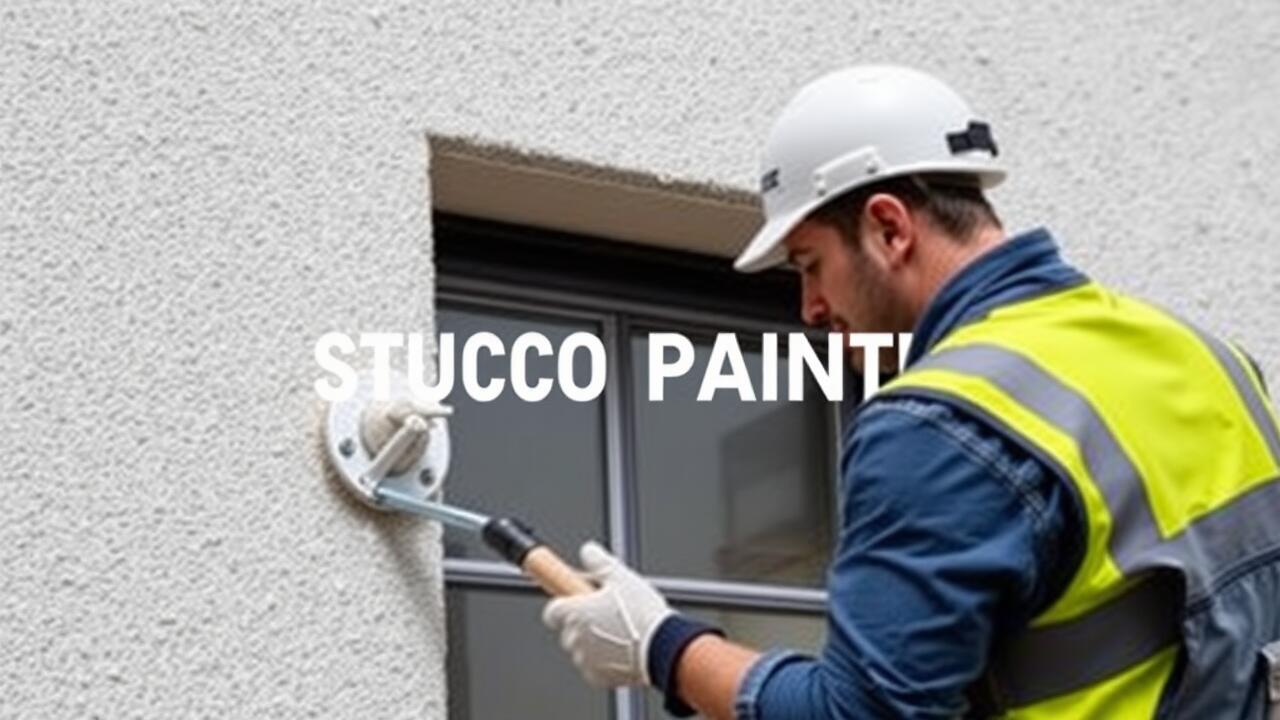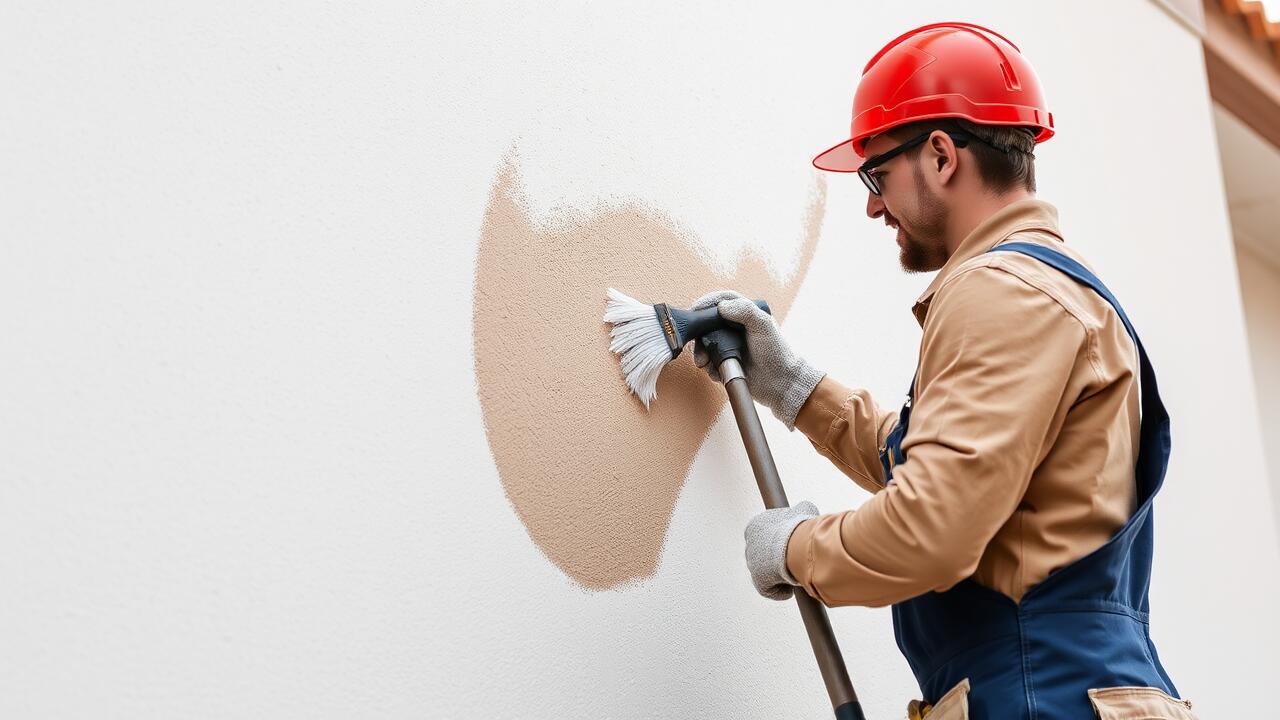
Applying Primer for a Durable Finish
Applying a primer is a crucial step in achieving a durable finish when painting stucco surfaces. Primer acts as a bonding agent, ensuring that the paint adheres properly and prevents issues such as peeling and fading. When searching for "Stucco Painting near me," consider contractors who emphasize the importance of using high-quality primers specifically designed for textured surfaces. This initial layer not only enhances the longevity of the paint but also helps create a smooth, uniform base for the final coat.
In addition to improving adhesion, primer can also enhance the overall appearance of the paint job. It can reduce the absorption of the topcoat, enabling more even coverage and vibrant color. Many homeowners overlook this essential step, which can lead to subpar results. Those interested in ensuring a lasting effect should prioritize finding professionals who understand the nuances of application. This attention to detail sets the stage for a stunning stucco finish that will withstand the test of time.
Importance of Primer in Stucco Painting
Applying a primer before painting stucco surfaces is crucial for achieving a long-lasting and attractive finish. The porous nature of stucco can absorb paint unevenly, leading to issues like peeling, chipping, or fading. A high-quality primer seals the surface, providing a uniform base that enhances paint adhesion. This step not only improves the durability of the paint job but also helps to prevent moisture-related problems, which are particularly important in areas with high humidity.
Selecting the right primer can significantly impact the overall quality of your stucco painting project. Many local paint suppliers offer primers specifically formulated for textured surfaces. When searching for "Stucco Painting near me," it’s beneficial to consult with professionals who can recommend the best products suited for your specific stucco type and environmental conditions. Properly priming the surface lays the foundation for a successful paint application, ensuring that the end result will withstand the test of time.
Mastering the Application Process
Mastering the application process is crucial for a successful stucco painting project. Begin by gathering the right tools, including a high-quality roller and brushes suited for textured surfaces. Ensuring the surface is prepped and clean will prevent any imperfections in the final look.
When it comes to the application technique, use a stippling motion for achieving better coverage on the stucco's uneven texture. This method allows the paint to fill in the nooks and crannies effectively. If you're looking for professional assistance, searching for "Stucco Painting near me" can provide local experts who can help you achieve a flawless finish.
Best Practices for Even Coverage
Achieving even coverage on stucco surfaces requires a careful approach and the right tools. Begin by selecting a quality roller specifically designed for textured surfaces. These rollers have longer naps that help reach into the grooves and crevices of stucco, ensuring an even coat. When applying paint, work in sections to maintain a wet edge, allowing for seamless blending and reducing the risk of visible lines between passes. Using a brush to cut in along edges and corners can further enhance coverage and create a crisp finish.
For those considering professional assistance, searching for "Stucco Painting near me" can lead to local experts who understand the nuances of this material. They can provide valuable insights on specific products and techniques tailored to your stucco surface. Additionally, hiring professionals might ensure that the application process accounts for factors like weather conditions and surface preparation, which are crucial for long-lasting results.
Textured Finishes for Enhanced Aesthetics
Textured finishes can transform the appearance of stucco surfaces, adding depth and dimension that enhance overall aesthetics. Various techniques exist for achieving distinct textures, such as stucco spray, sponge techniques, and the use of stencils. Each method brings its unique charm, allowing homeowners to customize their exterior or interior walls according to personal preferences. When looking for options, searching for "Stucco Painting near me" can yield local professionals skilled in delivering these creative finishes.
Incorporating textures can also offer practical benefits. Rougher finishes may help hide imperfections in the stucco surface, making them an ideal choice for older homes or those with extensive wear and tear. Additionally, textured finishes can improve surface durability, providing resistance to elements like moisture and sunlight. Exploring local services with expertise in textured applications will ensure that your project achieves the desired look while maintaining longevity.
Creative Techniques for Adding Texture
Adding texture to stucco surfaces can elevate the overall aesthetic of a project significantly. One creative technique involves using a sponge during the application process. By dabbing the wet paint with a damp sponge, you can create unique patterns and textures that add depth and character. Alternatively, a brush can be employed to create a stippled effect, giving the surface a tactile quality that enhances its visual appeal.
For those seeking a more intricate design, consider incorporating a comb or a textured roller into your application toolkit. Using a comb allows for the creation of linear textures, while a textured roller can introduce repeating patterns that mimic natural elements. When searching for tips or professionals, using the phrase "Stucco Painting near me" can help locate local experts who can provide guidance or skilled labor for achieving these eye-catching finishes.
FAQS
Why is it important to use primer before painting stucco surfaces?
Using primer on stucco surfaces is important because it helps create a strong bond between the paint and the surface, enhances the durability of the finish, and ensures that the paint adheres evenly, reducing the chances of peeling or chipping.
What type of primer should I use for stucco surfaces?
It's best to use a high-quality acrylic or elastomeric primer designed specifically for masonry or stucco surfaces. These primers provide excellent adhesion and flexibility, accommodating the natural expansion and contraction of the stucco.
How can I achieve an even paint coverage on stucco?
To achieve even paint coverage on stucco, use a combination of tools like a roller with a thick nap for larger areas and a brush for corners and details. Apply the paint in multiple thin coats rather than one thick coat, allowing each layer to dry thoroughly before applying the next.
What are some creative techniques for adding texture to stucco finishes?
Creative techniques for adding texture to stucco finishes include sponging, rag rolling, or using stencil methods. You can also experiment with different tools, such as brushes or combs, to create unique patterns and effects that enhance the overall aesthetic.
Can I paint over existing paint on stucco surfaces?
Yes, you can paint over existing paint on stucco surfaces. However, it's important to ensure the existing paint is in good condition, clean, and properly adhered. You may need to scrape off any loose or peeling paint before applying a new coat. Additionally, priming may be necessary to ensure the new paint adheres well.
